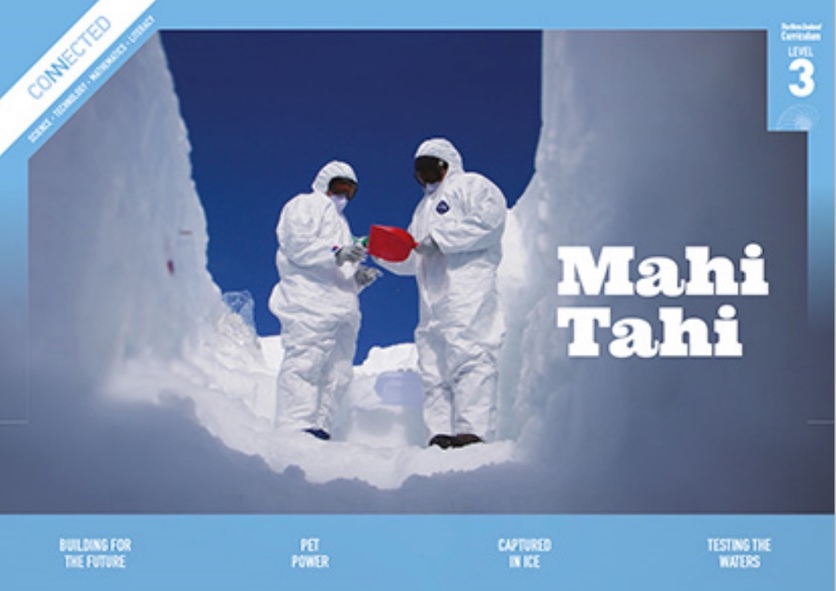Join Nancy Bertler, a glaciologist who collects ice cores, to learn how the Earth’s climate has changed over time. This information helps her and other scientists predict how our climate could change in the future.
Climate change is a wicked problem that provides a wide range of opportunities to develop an understanding about the nature of science and the science capabilities and links science content knowledge to a current socio-scientific issue.
Check your school resource area for this article from the 2017 level 3 Connected journal ‘Mahi tahi’, download it as a Google slide presentation from Tāhūrangi or order it from the Ministry of Education.
The teacher support material (TSM) can be downloaded from Tāhūrangi (Word and PDF files are available). These materials focus on the science capability ‘Engage with science’ as well as the Planet Earth and Beyond strand. Activity suggestions include exploring sea level rise, climate change and fossil fuels. Literacy strategies are also suggested, and many additional resource links are provided.
Related content
Learn more in the Hub articles Antarctica and global climate change and Climate change, melting ice and sea level rise.
The 2017 Connected article Rising seas describes how scientists investigate what is happening with sea levels and use evidence to suggest how we might adapt to the changes.
Information about scientists working with ice can be found in the Hub article Trapped in ice, which includes videos on transporting, analysing and dating ice cores.
The film Thin Ice – The Inside Story of Climate Science provides a look at our planet’s changing climate, with a range of Science Learning Hub resources designed to support its use in the classroom. The recorded webinar Tackling planning in science explores easily transferable planning skills and pedagogies using climate change as a context.
For exploring wicked problems like climate change, the Hub resources that may also be helpful include wicked problems as opportunities for cross-curricular and key competency learning and planning pathways using climate change as a context. The science capabilities ‘Gather and interpret data’ and ‘Engage with science’ feature strongly in this Connected article. Explore them further in the articles Collecting data in Antarctica and Climate action.
Check out our entire range of Connected articles here. We’ve curated them by topic and concepts.
Useful links
The Connected journals can be ordered from the Down the Back of the Chair website. Please note that access to these resources is restricted to Ministry-approved education providers. To find out if you are eligible for a login or if you have forgotten your login details, contact their customer services team on 0800 660 662 or email orders@thechair.education.govt.nz.
Episode 6 of the Science on a Napkin video series features Dr Nancy Bertler, discussing ice core records and what they tell us about the relationship between greenhouse gases, temperature and sea levels.
Scientists continue to research climate change from the unique clues that the Antarctic environment holds. Discover more about Victoria University of Wellington’s Antarctic Research Centre Te Puna Pātiotio's key research areas and how they approach them. Associate Professor Nancy Bertler is part of the team ‘Melting Ice and Rising Seas’ that won the 2019 Prime Minister’s Science Prize.
Returning to a green Antarctica is a comic by Simone Giovanardi and Bella Duncan. It explains why Antarctica once looked more like South Island’s West Coast beech forests than the frozen continent we know today.
Acknowledgement
The Connected series is published annually by the Ministry of Education, New Zealand.


